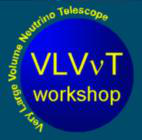Orateur
Michel ANDRE
(Laboratori d'Aplicacions Bioacústiques (LAB), Universitat Politècnica de Catalunya (UPC))
Description
Noise pollution in the marine environment is an emerging but serious concern. Its implications are less well understood than other global threats and largely undetectable to everyone but the specialist. In addition, the assessment of the acoustic impact of artificial sounds in the sea is not a trivial task, certainly because there is a lack of information on how the marine organisms process and analyze sounds and how relevant these sounds are for the balance and development of the populations. Further, this possible acoustic impact not only concerns the hearing systems but may also affect other sensory or systemic levels and result equally lethal for the animal concerned. If we add that the negative consequences of a short or long term exposure to artificial sounds may not be immediately observed one can understood how challenging it is to obtain objective data allowing an efficient control of the introduction of anthropogenic sound in the sea. To answer some of these questions, the choice to investigate cetaceans and their adaptation to an aquatic environment is not fortuitous. Cetaceans, because of their optimum use of sound as an ad-hoc source of energy and their almost exclusive dependence on acoustic information, represent not only the best bio-indicator of the effects of noise pollution in the marine environment, but also a source of data to improve and develop human underwater acoustic technology. Here, we present how the characteristics and performance of the sperm wh

